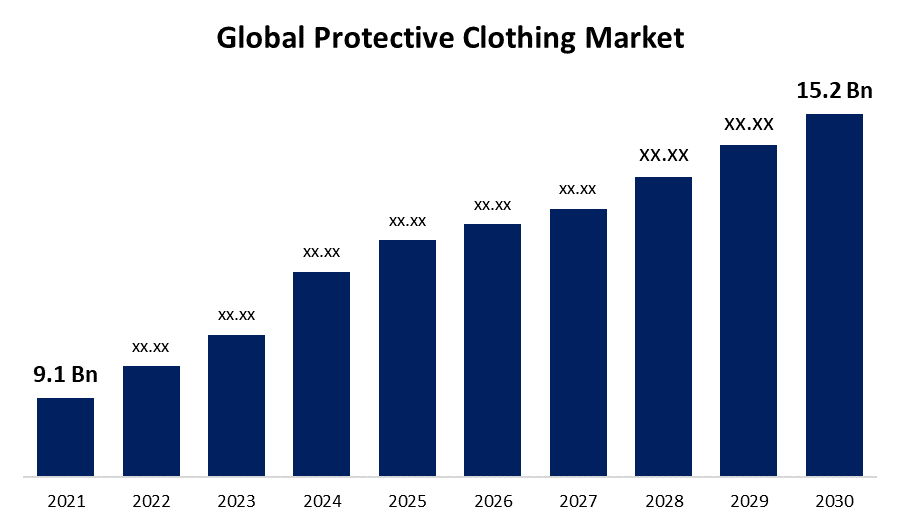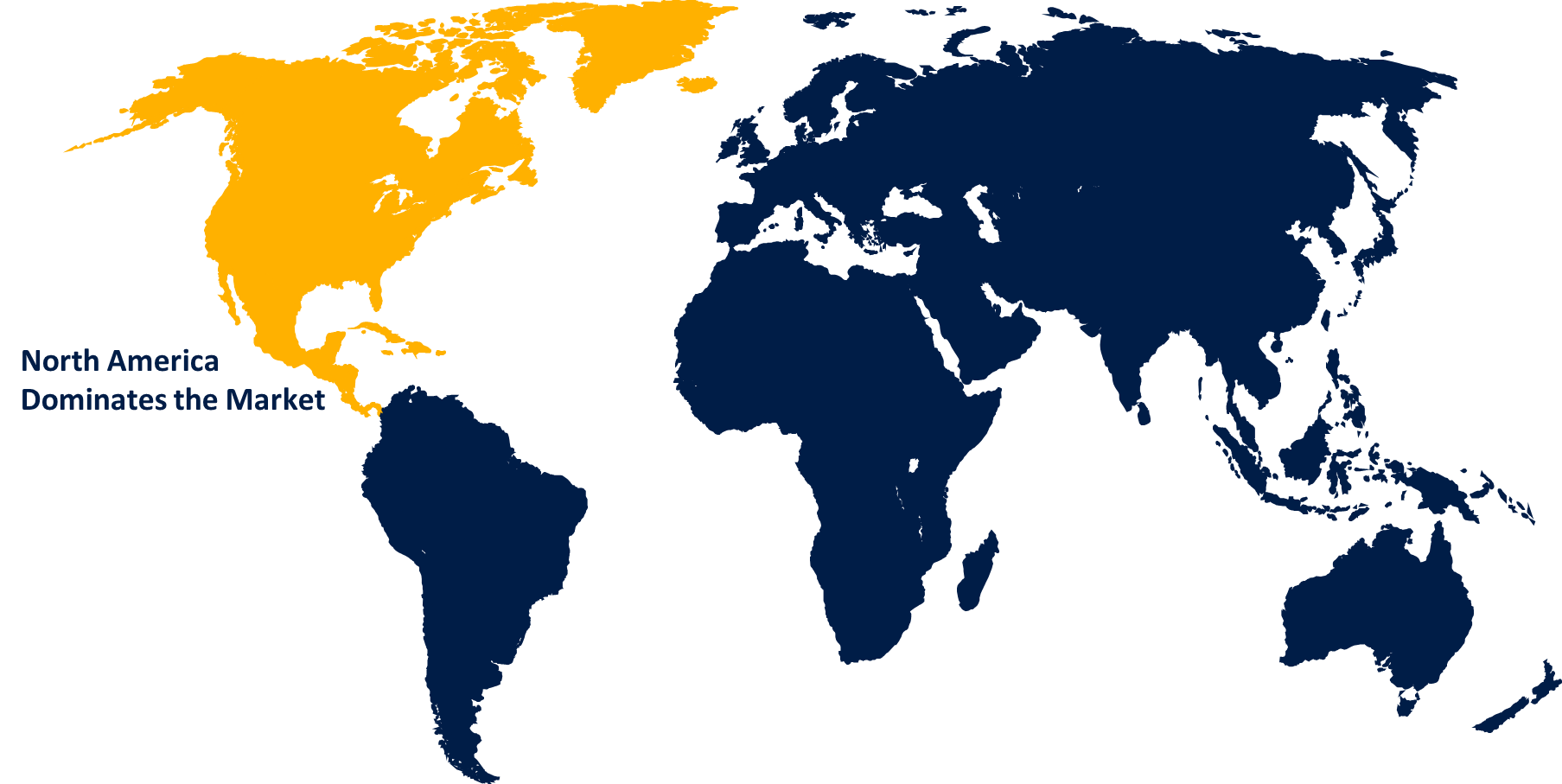Global Protective Clothing Market Size To Grow USD 15.2 Billion By 2030 | CAGR of 5.9%
Category: Advanced MaterialsGlobal Protective Clothing Market Size To Worth USD 15.2 billion by 2030
According to a research report published by Spherical Insights & Consulting, the Protective Clothing Market Size to grow from USD 9.1 billion in 2021 to USD 15.2 billion by 2030, at a Compound Annual Growth Rate (CAGR) of 5.9% during the forecast period. Workers are becoming more aware of how important keeping them safe as the industrial sector continues to grow. Protective clothing is in high demand in all industries because of how complicated and dangerous things are getting. Due to strict safety rules in place in all industrial sectors, markets are growing in many end-use industries, such as construction and oil and gas.

Get more details on this report -
Browse key industry insights spread across 200 pages with 145 market data tables and figures & charts from the report "Global Protective Clothing Market Size, Share, and COVID-19 Impact Analysis, By Material Type (Aramid & Blends, Polyolefin & Blends, Cotton Fibres, Laminated Polyesters, and Polybenzimidazole [PBI]), By End-Use (Oil & Gas, Military & Defense, Construction & Manufacturing, Pharmaceuticals/Medical, Firefighting and Others), By Applications (Thermal, Chemical, Mechanical, Biological/Radiation, and Others), and By Region (North America, Europe, Asia-Pacific, Latin America, Middle East, and Africa), Analysis and Forecast 2021 – 2030 " in detail along with the table of contents. https://www.sphericalinsights.com/reports/protective-clothing-market
The COVID-19 pandemic has made an adverse impact on credit portfolios. There has been an unprecedented rise in unemployment and disruption in economic activity, putting a strain on the solvency of customers and companies. Central banks have taken a proactive approach by injecting liquidity into the market by lowering interest rates and asset purchase programs. Managing and monitoring credit, market, liquidity, and operational risk across financial markets were hard enough with ongoing geopolitical tensions, international trade wars, and the occasional hurricanes and earthquakes. The current pandemic has forced chief risk officers and their teams to recalibrate old assumptions and models used to manage and monitor risk. COVID-19’s global impact has shown that interconnectedness plays an important role in international cooperation. As a result, many governments started rushing toward identifying, evaluating, and procuring reliable solutions powered by AI.
The aramid & blends segment to account for the largest market size during the forecast period
Based on Material type, the protective clothing market is categorized into Aramid & Blends, Polyolefin & Blends, Cotton Fibres, Laminated Polyesters, and Polybenzimidazole [PBI]. The aramid & blends segment accounts for the largest market size during the forecast period. It is expected that the market for protective clothing will be dominated by materials made of aramid and blends. At first, nylon was used to make aramid fibers. Aramid fibers are easy to spot because of their high tensile and modulus strengths. They have mechanical properties that are 5–10% stronger than traditional synthetic fibers. This makes them perfect for many uses, such as ropes for offshore oil rigs, bulletproof vests, and airplanes and cars. Aramids are often used to make protective clothing because they are resistant to heat and flame and have better mechanical properties than steel or glass fibers of the same weight is expected to grow at the fastest CAGR over the forecast period.
The construction & manufacturing segment to account for the largest market size during the forecast period.
Based on end use, the protective clothing market is categorized into Oil & Gas, Military & Defense, Construction & Manufacturing, Pharmaceuticals/Medical, Firefighting, and Others. The construction & manufacturing segment is to hold a higher CAGR during the forecast period. The building and construction industry bought the most protective clothing because it was strong, durable, and resistant to abrasion, organic solvents, and high temperatures. In this end-use industry, the most important thing driving the market is that Europe and North America are putting strict health and safety rules in place. In a short amount of time, it is expected that the part of the economy called "construction" will have more and more machines, making it less dependent on manual laborers and lowering the need for safety gear.
The thermal Media segment to hold a higher CAGR during the forecast period
Based on application, the protective clothing market is categorized into Thermal, Chemical, Mechanical, Biological/Radiation, and Others The thermal segment to hold higher CAGR during the forecast period. Thermal protection apparel needs to be comfortable in addition to having properties such as resistance to fire and oil, simplicity of washing, and integration of seamless fabric. In August 2016, Magid, a developer, and distributor of safety solutions and personal protective equipment, released a flame-resistant welding jacket with a breathable FR mesh back panel to prevent heat fatigue. In 2014, DuPont developed the hydroentangled spun lace non-woven material known as Sontara. This material comprises Nomex and Kevlar and is utilized extensively for thermal protection. In addition, stringent fire safety rules and recommendations for lessening the likelihood of a fire breaking out in an industrial setting contribute to expanding the global market for protective apparel.
North America is estimated to account for the highest market share in 2022.

Get more details on this report -
The Global Protective Clothing Market has been segmented into five major regions: Asia-Pacific, Europe, APAC, Latin America, and MEA. The market for materials that can withstand heat and flames is expected to grow greatly in this area. During the forecast period, the market for high-visibility textiles is expected to grow a lot. The United States of America will have most of the market in North America. The strict laws that the United States and its federal government have in place to protect people's safety also help the global market growth. Demand for protective clothing from end-user industries like the oil and gas industry and the building and construction industry is also expected to help the market grow. In addition, competitors in the sector use many ways to buy new businesses and grow to stay ahead in the competitive market. For example, in December 2020, Delta Plus Group bought ERB Industries, which is known as one of the most important companies in North America that make personal protective clothing. Also, improvements in protective clothing will open up a lot of business opportunities. Asia-Pacific to hold a higher CAGR during the forecast period.
Recent Development
- In 2022, The 3M Company and Innovative Automation will work together to make the RoboTapea, an automated system. This means that industrial firms can use the system to their advantage.
- In 2022, Teijin Limited put its BARLEYmaxa super barley on the market in Europe.
Market Segment
This study forecasts revenue at global, regional, and country levels from 2021 to 2030. Spherical Insights has segmented the global protective clothing market based on the below-mentioned segments:
Global Protective Clothing Market, By Material Type
- Aramid & Blends
- Polyolefin & Blends
- Cotton Fibres
- Laminated Polyesters
- Polybenzimidazole [PBI]
Global Protective Clothing Market, By End Use
- Oil & Gas
- Military & Defense
- Construction & Manufacturing
- Pharmaceuticals/Medical
- Firefighting
- Others
Global Protective Clothing Market, By Applications
- Thermal
- Chemical
- Mechanical
- Biological/Radiation
- Others
Global Protective Clothing Market, Regional Analysis
- North America
- THE US
- Canada
- Mexico
- Europe
- Germany
- Uk
- France
- Italy
- Spain
- Russia
- Rest of Europe
- The Asia Pacific
- China
- Japan
- India
- South Korea
- Australia
- Rest of Asia Pacific
- South America
- Brazil
- Argentina
- Rest of South America
- Middle East & Africa
- UAE
- Saudi Arabia
- Qatar
- South Africa
- Rest of the Middle East & Africa
About the Spherical Insights & Consulting
Spherical Insights & Consulting is a market research and consulting firm which provides actionable market research study, quantitative forecasting and trends analysis provides forward-looking insight especially designed for decision makers and aids ROI.
Which is catering to different industry such as financial sectors, industrial sectors, government organizations, universities, non-profits and corporations. The company's mission is to work with businesses to achieve business objectives and maintain strategic improvements.
CONTACT US:
For More Information on Your Target Market, Please Contact Us Below:
Phone: +1 303 800 4326 (the U.S.)
Phone: +91 90289 24100 (APAC)
Email: inquiry@sphericalinsights.com, sales@sphericalinsights.com
Contact Us: https://www.sphericalinsights.com/contact-us
Frequently Asked Questions (FAQ)
-
What is the market size of the Protective Clothing market?As per Spherical Insights, the size of the Protective Clothing market was valued at USD 9.1 billion in 2021 to USD 15.2 billion by 2030.
-
What is the market growth rate of the Protective Clothing market?The Protective Clothing market is growing at a CAGR of 5.9% from 2021 to 2030.
-
Which country dominates the Protective Clothing market?North America emerged as the largest market for Protective Clothing.
-
Who are the key players in the Protective Clothing market?Key players in the Protective Clothing market are E. I. du Pont de Nemours & Co., Lakeland Industries, Inc., Ballyclare Limited, 3M Company, Koninklijke Ten Cate NV, Teijin Limited, Workrite Uniform Company, Inc., Strike SL., WL. Gore & Associates, Inc., Glen Raven Inc., Lion Apparel Inc., Globe Manufacturing Co. LLC, Workrite Uniform Company Inc, Logistik Unicorp Inc., and Kermel Industries Radians, Inc.
-
Which factor drives the growth of the Protective Clothing market?Increased demand from end-user industries is expected to drive the market's growth over the forecast period.
Need help to buy this report?